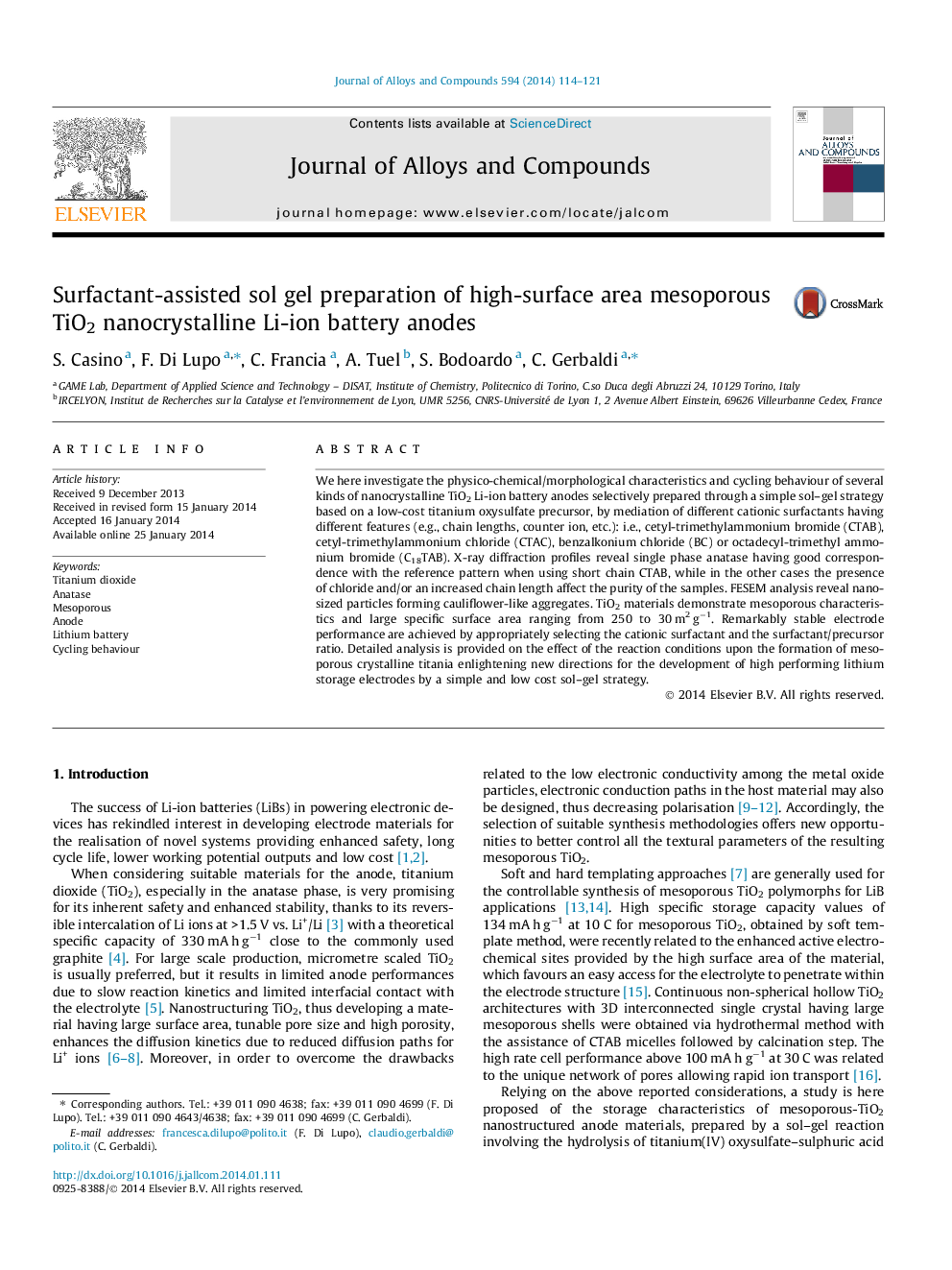| Article ID | Journal | Published Year | Pages | File Type |
|---|---|---|---|---|
| 1611447 | Journal of Alloys and Compounds | 2014 | 8 Pages |
•Mesoporous TiO2 nanocrystalline lithium battery anodes with tunable morphology.•Simple sol–gel technique using different cationic surfactants is adopted.•Textural/morphological characteristics define the electrochemical behaviour.•TiO2 anatase using C16TAB exhibits stable performance after 200 cycles.•It shows promising prospects as high-voltage safe Li-ion battery anode.
We here investigate the physico-chemical/morphological characteristics and cycling behaviour of several kinds of nanocrystalline TiO2 Li-ion battery anodes selectively prepared through a simple sol–gel strategy based on a low-cost titanium oxysulfate precursor, by mediation of different cationic surfactants having different features (e.g., chain lengths, counter ion, etc.): i.e., cetyl-trimethylammonium bromide (CTAB), cetyl-trimethylammonium chloride (CTAC), benzalkonium chloride (BC) or octadecyl-trimethyl ammonium bromide (C18TAB). X-ray diffraction profiles reveal single phase anatase having good correspondence with the reference pattern when using short chain CTAB, while in the other cases the presence of chloride and/or an increased chain length affect the purity of the samples. FESEM analysis reveal nanosized particles forming cauliflower-like aggregates. TiO2 materials demonstrate mesoporous characteristics and large specific surface area ranging from 250 to 30 m2 g−1. Remarkably stable electrode performance are achieved by appropriately selecting the cationic surfactant and the surfactant/precursor ratio. Detailed analysis is provided on the effect of the reaction conditions upon the formation of mesoporous crystalline titania enlightening new directions for the development of high performing lithium storage electrodes by a simple and low cost sol–gel strategy.
